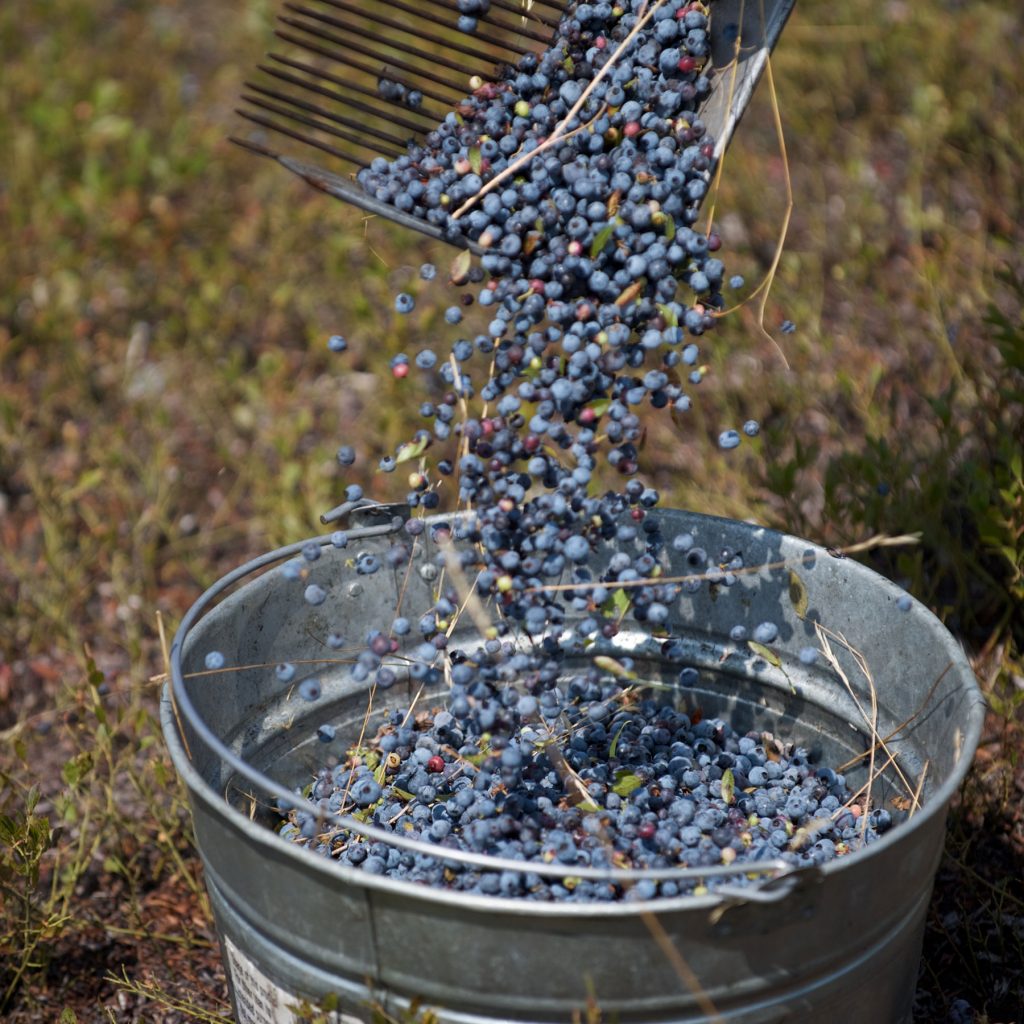Wild Blueberries: 6 Things You Probably Didn't Know
Where else in the world do locals save their vacation time to engage in hard labor?
In Maine and neighboring regions of Canada, thousands of acres of wild blueberries grow naturally. In some towns, local supporters actually take time off work to help harvest them.
Why do they do it?
The industry’s economic impact alone has left an unmistakable mark on the surrounding region. Even more than that, the wild blueberry tradition has taken a major role in the region’s history, securing a soft spot in the hearts of locals. In fact, most wild blueberry farms are still family-owned today, and for many of these owners, the tradition goes back generations. It’s become a part of their heritage — a way of life.
Possibly one of North America’s most natural crops, wild blueberries have an allure that extends far beyond the borders of Maine and Eastern Canada.

What’s wild about them?
Perhaps you’ve never known there was such a thing as a “wild” blueberry. Or maybe you did know, but assumed they were just like the cultivated kind you usually find at your local supermarket.
Wild blueberries (Vaccinium angustifolium), 1 of only 3 berries native to North America, vary considerably from the cultivated kind (Vaccinium corymbosum) that most people think of when they picture a blueberry. Here are 6 specific differences.
1. Growing
Cultivated blueberries take careful planning and planting, whereas wild blueberries grow naturally in fields and rocky hills called barrens. No one plants wild blueberries; they’ve grown naturally for thousands of years.
Because wild blueberries grow on their own, they are a low-maintenance crop. Field owners are hands-off throughout most of the growing season, although they often introduce bees to naturally pollinate the bushes. Wild blueberries have a two-year crop cycle, so owners prune fields every other year with rotary mowers.
2. Characteristics
Cultivated blueberries are fairly uniform in their size, color and taste. Wild blueberries are generally much smaller in size than cultivated. They also vary in color from different shades of blue to almost black. Taste varies from very sweet to not-so-sweet.
3. Genetic composition
Those differences in taste, color and size are largely due to genetic diversity. As mentioned before, wild blueberries grow 100% wild - not planted or tampered with by people. So, wild blueberries have no genetic engineering, producing a very diverse crop.
The uniformity of cultivated blueberries results from selective breeding and farming practices.
4. Height
When you think of a blueberry bush, you’re probably thinking of a cultivated blueberry bush. They stand in straight rows and tower over the average person. These are referred to as “highbush."
Wild blueberry bushes are referred to as “lowbush." They spread low and wide through runners, covering fields in a random manner. Harvesters have to kneel down to reach them.
5. Harvest
Because of the lowbush height and often rocky terrain, many wild blueberry fields cannot be harvested with traditional machinery, and must be hand-harvested. Hand-harvesters use rakes to scoop berries off the bushes, working in an upward motion. These rakes are specifically engineered for wild blueberry harvest.
The harvest typically begins in late July and ends in early September.

6. Nutrition
For the consumer, the most notable difference between wild and cultivated blueberries probably lies in nutritional content. Not only can you get more fruit servings per pound from the smaller, wild berries, you also get more nutrition.
The official Wild Blueberries organization calls the wild-grown blueberry the “blueberriest blueberry” and the “better blueberry.” According to their website, wild blueberries have 2x the antioxidants of cultivated blueberries, thanks to a higher concentration in the flavonoid anthocyanin.
According to the site, this high concentration developed as the berries adapted to the cold temperatures and harsh climate of Maine and Canada. The hardiness it takes to survive these climates makes them naturally more rich in anthocyanin than cultivated berries, which generally grow in milder climates and less rugged conditions.
Industrial use
Once the blueberries are harvested, most suppliers utilize the Individually Quick Frozen (IQF) process, which locks in this nutrition at the optimal stage. Blueberries are frozen within 24 hours of harvest - at the height of nutrient value. Frozen wild blueberries are available year-round for both food manufacturers and consumers.
Check out Wild Blueberries’ infographic on the nutritional benefits of frozen over fresh. The IQF process works ideally for all kinds of produce. Watch the process from start to finish.
Before freezing, berries are sorted, washed, and graded for character and size. The USDA has set an A-B-C grading scale based on a variety of physical characteristics like color, texture and any visible defects, with Grade A possessing the most aesthetically appealing characteristics. After they are frozen, the berries are microbiologically tested.
The industry’s rigorous quality control systems and agricultural programs ensure food safety, appealing to processors of all sizes.

